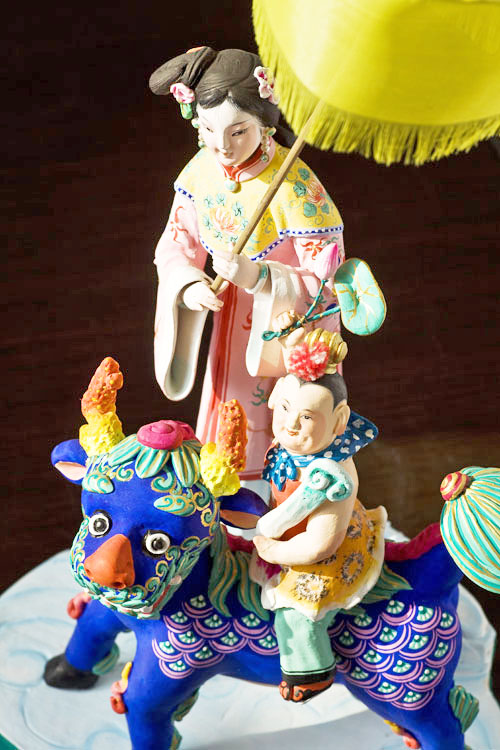Huishan clay figurines mimic daily life’s vitality

Huishan clay figurines of “tetrapod” enabled people to express their auspicious wishes for a happy life.
Produced in Wuxi, Jiangsu Province, Huishan clay figurines have been listed as a national intangible cultural heritage since 2006. During the Ming and Qing dynasties (1368-1911), clay figurines emerged as popular folklore products in the southern reaches of the Yangtze River.
Huishan clay figurines come in various forms, such as molded coarse clay and handcrafted fine varieties. During the Ming and Qing dynasties, Huishan clay figurines served as important auspicious blessings, gifts and toys that were a vital component of leisure time for ordinary people.
With regard to traditional uses and styles, Huishan clay figurines are divided into two broad categories—traditional toys and artistic works. Traditional toys are generally of the molded coarse clay variety. The servants who guarded the ancestral temple were responsible for making most of these toys, which were given to children so that they would have something to play with while grand ancestor worship ceremonies were held in the temple.
The most well-known type among the molded coarse clay figurines is the Da A Fu series, depicting a plump boy holding a fish or a peach. For example, Tuan A Fu, Xiao Hua Nan, He Ye Nan and other chubby children with smiling faces that make up the Da A Fu series are famous for their innocent, honest and naive expressions.
In addition, there are animal series and vehicle series. Animal figurines are made in the shapes of cats, roosters, oxen and others.
The vehicle figurines are tied with to a string, allowing the children to drag the string to make the vehicles move. In ancient times, most of these vehicle figurines were crafted in the shape of the person who scored highest on the feudal imperial examination, which enabled children to recreate the scene of that person parading through the streets in celebration. These three types of clay figurines were mainly made from molds, so they were easy to reproduce.
As Kunqu opera and Peking opera grew in popularity during the Ming and Qing dynasties, opera characters increasingly became a subject of public fascination. Though operas were not performed every day, the clay figurines of opera characters satisfied people’s cultural demands and enabled them to appreciate the beauty of opera in their daily lives. That explains why a number of handmade opera clay figurines were fabricated in Huishan at that time.
Another type of Huishan clay figurine is called “tetrapod,” which mimics a person riding on an ox, horse, Kylin or other auspicious animal with four feet. Folk people place their best wishes for living longer, bearing children, enjoying good harvest, and passing the fedual imperial examination on these caly figurines.
Wang Meishi is from the Nanjing Museum.
